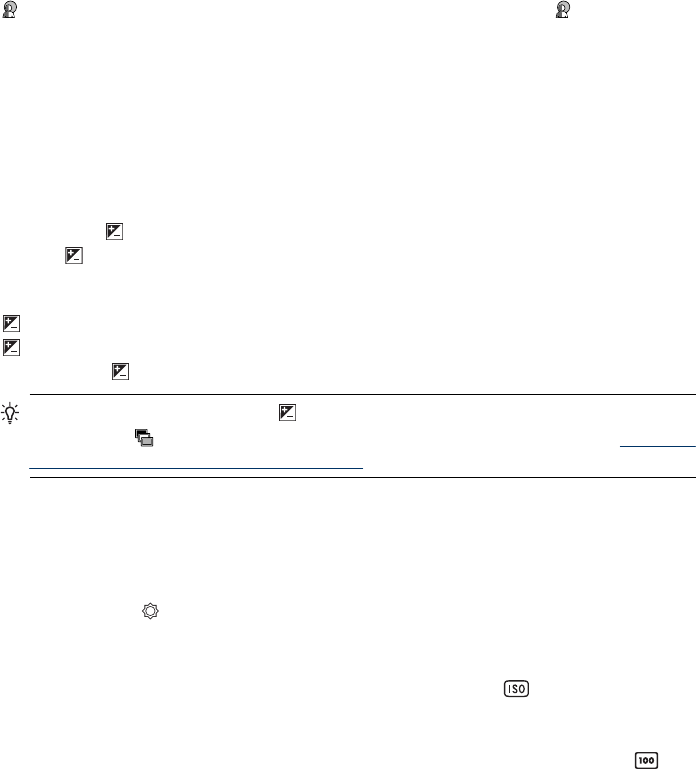
Adaptive Lighting
This setting balances the relationship between bright and dark areas in a picture,
preserving gentle contrasts while reducing harsh contrasts. When used with a flash,
Adaptive Lighting can brighten areas that a flash wouldn’t reach. Adaptive
Lighting is useful in situations like these:
• Outdoor scenes with a mixture of sun and shade
• High contrast scenes that contain both light and dark objects
• Indoor scenes that use flash photography (to soften or even out the effect of the flash)
• Backlit scenes where the subject is too far away for the flash to reach, or is severely
backlit (for example, in front of a window)
Exposure Compensation
You can use Exposure Compensation to override the camera's automatic exposure
setting.
Exposure Compensation is useful in scenes that contain many light objects
(like a white object against a light background) or many dark objects (like a black object
against a dark background). Such scenes could turn out gray without the use of
Exposure Compensation. For a scene with many light objects, increase the
Exposure Compensation to a positive number. For a scene with many dark objects,
decrease the
Exposure Compensation.
TIP: To see the effect varying Exposure Compensation settings might have on
a scene, use
Exposure Bracketing (see Exposure Bracketing under “Using the
Picture Capture and Video Record menus” on page 17).
White Balance
Different lighting conditions cast different colors. This setting allows the camera to
compensate for this, reproducing colors more accurately and ensuring that whites appear
white in the final image. You can also adjust the white balance to produce creative effects.
For example, the
Sun setting produces a warmer look to the image.
ISO speed
This setting adjusts the sensitivity of the camera to light. When ISO Speed is set to
the default Auto setting, the camera selects the best ISO speed for the scene.
Lower ISO speeds capture images with the least amount of grain (or noise), but result in
slower shutter speeds. If taking a picture in low light conditions without a flash at
ISO
100, use a tripod.
Higher ISO numbers allow faster shutter speeds, and can be used when taking pictures
in dark areas without a flash, or when taking pictures of fast moving objects. Higher ISO
speeds produce pictures with more grain (or noise) and, therefore, can be of lower quality.
Using the Picture Capture and Video Record menus 21


















